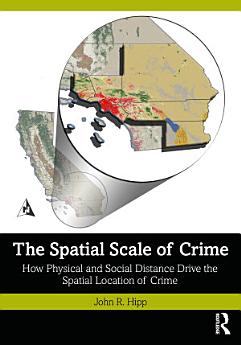The Spatial Scale of Crime: How Physical and Social Distance Drive the Spatial Location of Crime
About this ebook
A characteristic of many crime incidents is that they happen at a particular spatial location and a point in time. These two simple insights suggest the need for both a spatial and a longitudinal perspective in studying crime events. The spatial question focuses on why crime seems to occur more frequently in some locations than others, and the consequences of this for certain areas of cities, or neighborhoods. The longitudinal component focuses on how crime impacts, and is impacted by, characteristics of the environment. This book looks at where offenders, targets, and guardians might live, and where they might spatially travel throughout the environment, exploring how vibrant neighborhoods are generated, how neighborhoods change, and what determines why some neighborhoods decline over time while others avoid this fate.
Hipp’s theoretical model provides a cohesive response to the general question of the spatial scale of crime and articulates necessary future directions for the field. This book is essential for students and scholars interested in spatial-temporal criminology.
WINNER of the 2023 James Short Senior Scholar Award!
About the author
John R. Hipp is Professor in the Departments of Criminology, Law and Society, and Sociology, at the University of California, Irvine. His research interests focus on how neighborhoods change over time, how that change both affects and is affected by neighborhood crime, and the role networks and institutions play in that change. He approaches these questions using quantitative methods as well as social network analysis. He has published substantive work in such journals as American Sociological Review, Criminology, Social Forces, Social Problems, Mobilization, City & Community, Urban Studies, and Journal of Urban Affairs. He has published methodological work in such journals as Sociological Methodology, Psychological Methods, and Structural Equation Modeling.





